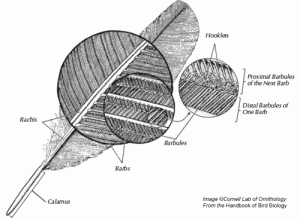While visiting the Arizona-Sonora Desert Museum west of Tucson, I was not surprised to find a model depicting the evolution of birds from reptiles. Made of welded copper (if I remember correctly), the model showed how gradually reptiles developed wings and eventually learned to fly as birds. It was all so clearly presented showing six or eight transition forms, how could anyone doubt it?
Where Are the Transitional Fossils?
Of course, no one there explained that the transitional forms were imaginary. They have never been observed and nothing in the fossil record indicates that reptiles changed into birds over long periods of time.
Here is a quote from https://dinosaurworld.com, “Wings evolved over many, many millions of years. Scientists have extensively studied the wings of modern-day birds and have identified many important anatomical details. Especially important are those not found on the ‘arms’ of non-birds. Major efforts have gone into finding early occurrences of such details in the fossil record, but unfortunately, it is far from complete.” This is saying transition forms just aren’t there. Yes, both reptiles and birds hatch from eggs but similarities end quickly. For example, reptiles are cold-blooded whereas birds are warm-blooded, with a body temperature slightly above humans (104º-108º).
Just How May They Have Evolved?
In an article in https://animals.about.com, the author shows the mystery of the evolution of flight. “All animals that fly have wings. To understand the evolution of flight, it helps to consider how wings may have evolved: wings may have evolved from forelimbs used in the capture of small prey; wings may have evolved to assist animals as they jumped up from the ground; wings may have evolved as part of sexual display features; wings may have evolved to help animals glide efficiently.” Besides the fact that each of these theories is fraught with problems, consider the marvel of the feather.
Feathers play a crucial role in the life of birds besides allowing them to fly. Wiki says, “They are considered the most complex integumentary structures found in vertebrates.” Feathers are used for flight, thermal insulation, waterproofing, and coloration that helps in communication and protection.
Are Feathers Really Well Designed?
“Every feather is a marvel of engineering design. A single pigeon feather is composed of more than a million individual parts. Barbs extend from each side of a center shaft. Smaller barbules grow out of both sides of these barbs, which in turn are made with tiny microscopic barbicels. These barbicels are tiny hooks which interlock with barbules, weaving each feather together like the teeth on a zipper. If the barbs are pulled apart, the bird hooks them back together by simply running its beak through the feathers. For their weight, feathers are stronger than any man-made structures.”
Evolutionists claim that feathers evolved from reptile scales. “There is virtually no similarity between scales and feathers, nor is there any fossil evidence showing the transition from scale to feather.” (It Couldn’t Just Happen, p. 106)
Does This Point to a Creator?
We can give evolutionists credit for a great imagination and creative ways to present their theory. However, when they are not based on the facts, they are deceptive. The truth is that feathers, like all other marvels of our world, point to a masterful design by a Creator!
Sources:
- https://dinosaurworld.com
- https://animals.about.com
- https://www.wikipedia.org/
- Richards, L. (1987). It Couldn’t Just Happen, p. 106
